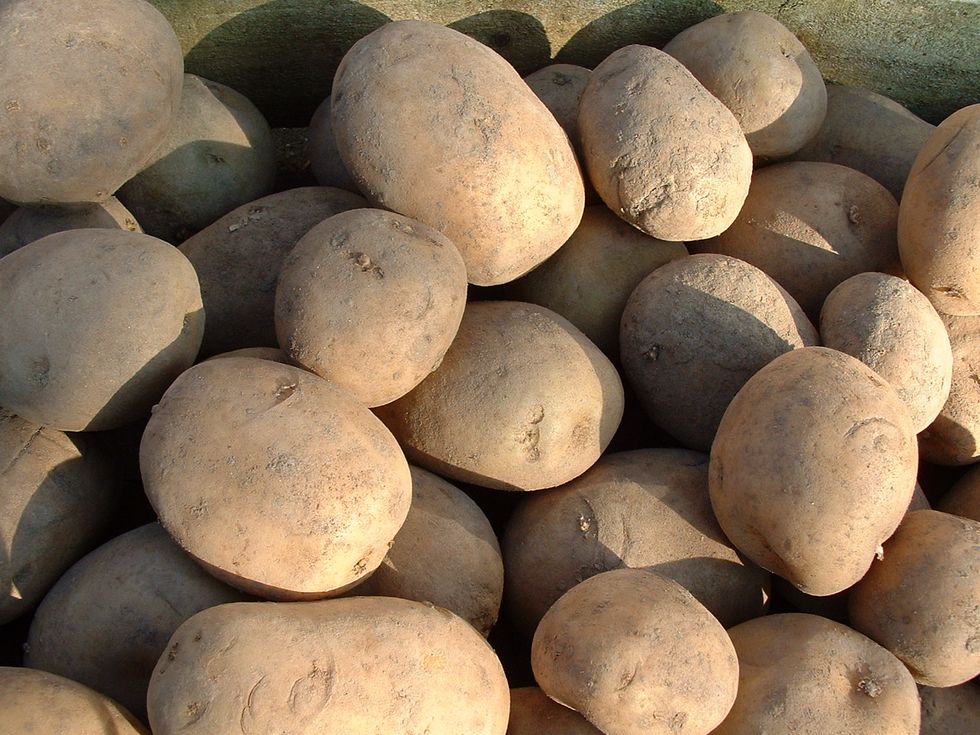
Good, inexpensive, filling, rich in nutrients. But also potentially dangerous for hypertension. And then versatile, low in calories and many other things. A food to know well in its (many) qualities and also in its defects.
They are good and can be declined in many ways. Those baked in the oven then, think for example of when they are cooked with mushrooms, have an unparalleled value: that of absorbing so much and so well the taste of the food with which they are cooked to overcome it in goodness. In short, they are eclectic, on average low in calories (if cooked properly), very tasty and have the super power to remove hunger. Which is no small feat. But they too have some flaws, even if they can rightly be called a super food .
An article in the Huffington Post defines them as super food family ( click here ). And he underlines how long they have been the favorite food of children and how every year they are consumed across the globe by about a billion people. Potatoes are in fact the fourth most widespread agricultural product after rice, wheat and corn which are part of world cuisine.
In short, potatoes are a super food, but they not only have advantages and it also depends on the variety. Mondial, Sifra , Monnalisa, Vivaldi, Primura, Almera, Agata, Liseta, new, American, yellow or white fleshed potatoes : there are a multitude of potatoes that make up the substantial army of this category and for each species there is an ideal use. The varieties are many and the properties are not exactly identical. But according to two recent studies that have addressed the consumption of potatoes, there is a potential drawback and advantage to this food.
In the first study ( click here ), published in the British Medical Journal and conducted on a sample of more than 187,000 people followed for more than 20 years, scientists from Brigham and Women's Hospital observed that a high consumption of boiled potatoes or in the form of mashed or baked or fried was associated with an increased risk of hypertension. While replacing one serving of potatoes per day (boiled, mashed or baked) with one of vegetables, the risk was reduced. The accusation is the starch contained in potatoes and their high glycemic index, which results in an increase in the level of sugar in the blood. The findings also suggest that women who regularly eat potatoes may have a higher increased risk of hypertension than men.
In the second study ( click here ), published in Nutrition & Diabetes , conducted on normal-weight children, it was instead found that mashed potatoes, in free quantity, combined with a fixed portion of meat, introduces 30- 40% of calories in less than equivalent foods such as pasta, rice, pre-fried potatoes cooked in the oven or fried potatoes. After all, the possibility that potatoes eaten instead of other starchy foods can help to contain calories is not surprising at all, also because boiled potatoes have a high satiating capacity.
Since potatoes, in addition to carbohydrates and potassium , also provide vitamins of group B and C , fiber and polyphenols , they can fully enter into a balanced diet, if consumed instead of other starchy foods and favoring preparations with moderate amounts of salt and fats (and possibly also consuming them with the peel). The guidelines of the former INRAN provide for precision a portion of 200 grams, 1-2 times a week, of this food. In general, however, apart from the side effect of hypetension (still to be explored), they have many powers.
They reduce inflammation , improve brain functions thanks to the high amounts of copper and iron, reduce kidney stones thanks to nutrients contained in the peel such as copper, manganese, potassium and vitamins B, help keep the intestine healthy thanks to fiber. Calories, as is well known, are low: they range from 85 for boiled potatoes, 148 for roast potatoes and finally 188 for fried potatoes. While those fried in bags escape any classification and would almost be perceived as non-potatoes. In fact they give the beauty of 507 calories, but they do not lead to hypertension. In short, they are practically not potatoes.







